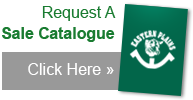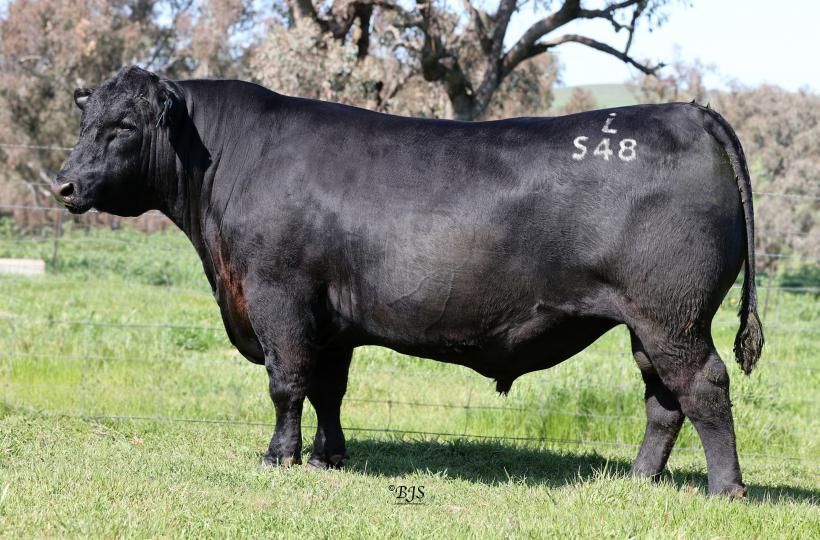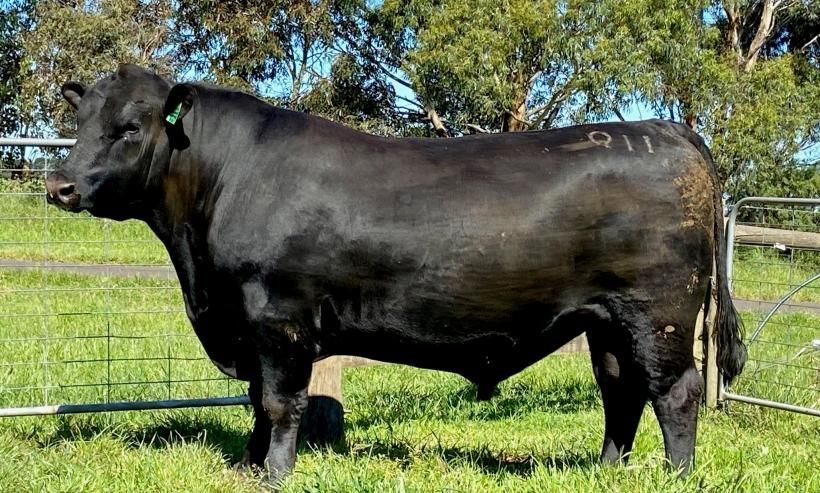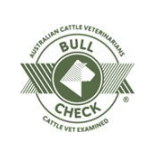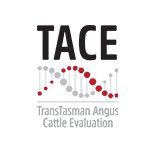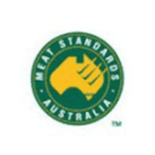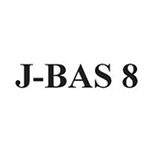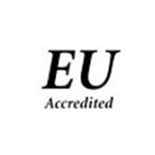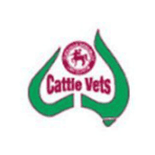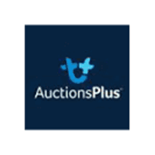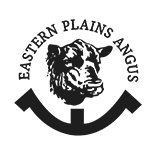BULL SALE
Wednesday 6th August 2025 @ 1pm
on-property at "Eastern Plains", Guyra, NSW
EMAIL US to request a copy
CLICK HERE for AuctionsPlus Catalogue
CLICK HERE for Buyer Pre-registration Form
(please go to GALLERY tab for Bull Photo's)
BULL WALK
Wednesday 30 July 2025
1.30pm to 3.30pm
on-property at "Eastern Plains", Guyra, NSW
Please join us for a pre-sale inspection
of our Bull Sale Team
Bull selection is an important investment decision for your business. It can be the single, most powerful tool for genetic improvement in your herd.
Because each bull contributes half of the genetics to every calf he sires, the genetic influence of bulls introduced into your herd is persistent and multi-generational. It will shape the profitability of your herd for many years to come, especially if you're breeding your own replacement heifers.
So, what’s important in bull selection?
It's simple; PROFIT.
That is, select bulls who will produce more profitable progeny in your herd. To best achieve this, requires bulls be a good fit for your program & well suited to your particular environment.
We urge buyers to look for OBJECTIVE INFORMATION describing the breeding functionality of bulls & the genetic potential they can pass onto their progeny, to reliably select those bulls best suited to your program & environment.
Above all else, it is OBJECTIVE INFORMATION which will enable you to make better informed, more reliable, more accurate breeding & bull selection decisions. In turn, this will drive PROFIT in your herd.
This is why we consider our pre-sale bull testing & assessment program to be integral to the success of your bull selection. It ensures independent, quantified, OBJECTIVE INFORMATION describing as accurately as possible the Fertility, Health Status, Temperament, Feet & Structure, Pedigree & Genetic Merit across the full range of production traits for our Bull Sale Team.
Our commitment to you; detail all this OBJECTIVE INFORMATION in our Bull Sale Catalogue so you have the tools you need at your fingertips to make better bull selection decisions for your operation.
What do we mean when we say OBJECTIVE INFORMATION? Please read on to find out.
BULLCHECK™
Whilst emphasis is often placed on selecting for female fertility in a breeding herd, it is less to common for this same rigour to be applied to bulls.
However, fertility in an individual bull will likely have a greater impact on your profit than fertility in an individual cow. This is because one bull can be used to breed up to 40 females via natural service. So infertility &/or subfertility in a bull, resulting in the poor reproductive performance in your female herd will prove very expensive.
This is why we believe it is so important, as both a buyer & as a seedstock producer, to have an objective assessment of a bull’s fertility before he steps into a sale ring.
BULLCHECKTM is an objective assessment of bull fertility according to defined & documented standards across set components. It has been developed by Australian Cattle Veterinarians (ACV), part of the Australian Veterinary Association Limited, for this specific purpose & is conducted by a qualified veterinarian accredited with ACV.
BULLCHECKTM sets out clear, concise methods & guidelines for vets to assess bulls according to these standards. It objectively substantiates a bull has a high probability of being fertile at the time of examination & the foreseeable future, save any unforeseen adverse events, injury or disease. It is founded on Australian research, peer reviewed literature & extensive in-field experience of Australian veterinarians. It is the 'gold card' - the highest possible standard currently available - for an objective fertility measurement of a bull's reproductive soundness that is transparent & consistent, no matter the breed.
What components are included in our pre-sale BULLCHECKTM testing?
- Scrotal circumference measurement in cm – to determine if above the minimum circumference according to age, weight & breed, plus a visual appraisal & palpation to assess scrotal body, shape & testicular tone, symmetry & evenness of testes, check for the presence of recognised conditions of the testes/scrotum.
- Physical examination of the bull & reproductive tract - foot & leg conformation, gait, leg joints, head (e.g. undershot/overshot jaw, lumpy jaw), inspection & evaluation of the penis, prepuce & sheath for the presence of infections, warts or injury, assessment of sheath depth, umbilicus & preputial eversion, palpation of internal sex gland via rectal entry for irregularities & infections, assessment to ensure the penis can be extruded, examination of the penis in the extended position.
- Sperm Motility - see below
- Sperm Morphology - see bleow
Our experience has been that few bulls are found to be completely sterile. Whilst bulls who repeatedly fail BULLCHEKTM may not necessarily be sterile, they can at least be accurately described as having reduced &/or low fertility at that point in time. If you’re multiple-sire joining, it can be almost impossible to identify these low fertility bulls as others in the joining team may cover for them. This exposes those fertile bulls to a greater risk of injury & thus more cost to you.
It could be that if given time, bulls with reduced &/or low fertility may recover & ‘regain’ their fertility to test compliant to BULLCHECKTM standards. However, until such time, which is often indeterminate, that bull really has no place in any sale ring.
2025 will be the 19th consecutive year, in which we offer Angus Bulls pre-sale tested according to BULLCHECK™ standards at our on-property Bull Sale. We are one of just a select few seedstock producers with such a record.
CLICK HERE for more in-depth detail about BULLCHECKTM (published by Australian Cattle Veterinarians).
SPERM MOTILITY
A crush side test for sperm quantity & its ability to move forward. At only about 60µm long, sperm cells need to be motile to get the job done!
Often referred to as a ‘crush side’ semen test, using electroejaculation, a semen sample is collected & examined ‘crush side’ to evaluate semen density, colour & motility (the % of individual sperm progressing forward). Our vet uses an ISperm to do this; digital technology using sperm recognition software with an iPad mini camera to determine the percentage of sperm motile, progressively motile & their associated velocities.
A threshold guide for acceptable minimum Sperm Motility is >30% progressively motile sperm.
However, only those bulls testing ≥50% progressively motile sperm in their semen sample make our Bull Sale Catalogue. Look for the BULLCHECK™ logo (see below) in our Bull Sale Catalogue to see Sperm Motility test results for each Lot.
SPERM MORPHOLOGY
We are one of a select few Angus studs who pre-sale test & report Sperm Morphology results in our Bull Sale Catalogue.
Morphology of the sperm is the anatomy or structure of individual sperm cells. It is not the same as Sperm Motility & we urge buyers not to confuse the two.
Sperm Morphology CANNOT be tested 'crush side'. It requires a large, expensive & specialised laboratory microscope to examine individual sperm in a preserved semen sample to assess the head, tail & mid-piece.
Why would you care about Sperm Morphology?
Sperm Morphology testing will ‘weed out’ those bulls who are the true loser’s when it comes to fertility, which crush side Sperm Motility testing on its own will not.
Sperm Morphology is a heritable trait, genetically related to the interval from calving to first oestrus cycle in females. Australian research has consistently shown Sperm Morphology to be positively associated with either pregnancy rate or calf output in beef breeding bulls.
Bulls who repeatedly fail to meet minimum standards for Sperm Morphology are at worst infertile, & at best, sub-fertile. Though sub-fertile bulls may still sire calves, they'll likely be costly, late calves because their subfertility can produce a non-viable embryo so the female fails to conceive on that cycle. Not her fault, but this forces the female/s into the next joining cycle. It is difficult for her to then break out of this late calving cycle, increasing her chances of PTE in a subsequent joining.
At least 100 sperm are assessed in the preserved semen sample to test Sperm Morphology to BULLCHECKTM standards. Abnormalities in the sperm are categorised according to the anatomical site of defects - ie whether the defect is present in the head, tail &/or mid-piece. Defects are classed as compensable or non-compensable. Defects are considered compensable if they can be compensated for by increased sperm numbers. Non-compensable defects cannot be compensated for by the addition of more sperm because though these sperm can fertilize eggs, the eggs are not viable.
Minimum ACV standards in Australia for Sperm Morphology are:-
- Up to 30% of sperm in a semen sample with compensable defects is acceptable.
- Up to 20% of sperm in a semen sample with non-compensable defects is acceptable.
- Normal Sperm - in addition to the tolerance levels for sperm in a semen sample with compensable & non-compensable defects, BULLCHECKTM sets a minimum requirement for the presence of normal sperm:-
(a) >70% normal sperm for bulls used in single sire matings or AI
(b) >50% normal sperm for bulls used in multiple sire matings
Look for the BULLCHECK™ logo (see below) in our Bull Sale Catalogue to see test results for each Lot.
BEEF CLASS STRUCTURAL ASSESSMENT SYSTEM
Structural problems impact negatively on both the reproductive & growth performance in your beef herd. It is widely recognised that structural problems in bulls have detrimental effects on conception rates, calving patterns & thus profitability. Similarly, females with inadequate structural characteristics are more prone to weaning lighter calves or conceiving later in the breeding season than their more functional counterparts. These structural problems filter through the beef supply chain, reducing income & productivity for the producer, backgrounder, feedlot etc.
Prior to cataloguing, Eastern Plains Angus Sale Bulls have been independently assessed for structure by Liam Cardile, LRC Livestock, using the Beef Class Structural Assessment System. Liam provides 6 individual scores for front & rear claw set, front & rear feet angle, rear leg side & hind views + a sheath, temperament & muscle score. Bulls deemed inadequate have been culled from the sale draft & sold for slaughter.
Liam is an experienced assessor, & structurally assesses many leading seedstock herds in Australia of differing breeds. He is not involved in genetic marketing or specific breeding advice/consultancy, so there is no conflict of interest to influence his stock appraisal. The merit & integrity of the structural data provided by Liam & LRC Livestock is recognised throughout the seedstock industry as being truly & fully independent.
Look for raw Structural Scores along with those for Temperament & Muscle Score in the Lot details for each bull in our Bull Sale Catalogue.
Click here for more detailed info on the Beef Class Structural Assessment System.
ESTIMATED BREEDING VALUES (EBV's) - THE FULL MONTY!!
EBVs are a reliable & accurate bull selection tool. We highly recommend buyers make good use of them in bull selection decisions.
You'll find the complete set of EBVs for each bull in his Lot Details in our Bull Sale Catalogue. There are 24; the FULL MONTY!
We urge buyers to be aware it is not uncommon for some EBVs to be omitted from sale catalogues. Docility & Structural EBVs; Claw Set, Foot Angle & Leg Angle, are oftentimes a case in point.
But without the full set of EBVs, you don’t have a clear picture of an Angus Bull’s genetic merit across the complete range of production traits — Calving Ease, Growth, Maternal, Fertility, Carcase, Feed Efficiency, Docility, & Structure.
Even the omission of just a few EBVs from a Bull Sale Catalogue limits your ability to make informed breeding & bull selection decisions. This can have lasting consequences for productivity & profitability in your herd.
Selection Indexes - we include all the economically relevant Selection Indexes in the Lot Details for each bull in our Bull Sale Catalogue - (a) Angus Breeding Index, (b) Domestic Index, (c) Heavy Grass Index & (d) Heavy Grain Index. We are one of just a select few Angus seedstock producers to include these 4 Selection Indexes in our Bull Sale Catalogue. In conjunction with EBVs, they will assist you in making more informed breeding & bull selection decisions.
We've been involved in formal performance recording of Angus cattle in Australia since its inception in the early 1970's. Formerly this was through Angus BREEDPLAN, which is now known as the TransTasman Angus Cattle Evaluation (TACE); the genetic evaluation program adopted by Angus Australia for Angus & Angus influenced beef cattle.
Throughout this time, we've recorded extensive raw performance data, on a routine basis, across our entire stud Angus herd, from which EBVs are calculated.
What raw data do we record? Birth weight & date, calving ease scores, calf fates, multiple birth codes, 200D, 400D & 600D weights, scrotal size, ultrasound scan data for rib & rump fat, eye muscle area & IMF, AI dates, joining dates for natural mating programs, preg-test results, fate & disposal codes for females, mature cow weights, mature cow heights, mature cow body condition scores, coat type scores, docility scores & structural scores.
We are one of just a few Angus seedstock herds to record & report such comprehensive, high quality raw data to TACE.
Additionally, Genomics has been conducted for our entire Bull Sale Team, to provide Genomically Enhanced EBVs.
Our long held practice of consistent & extensive data recording, combined with Genomics, ensures EBVs for our Bull Sale Team have higher accuracies.
This means those EBVs more truly reflect the genetic merit of that bull & can more reliably predict the performance of his progeny. Ultimately, this supports more informed breeding decisions; both for our clients & for ourselves.
Look for TRAITS OBSERVED in the Lot Details of a bull sale catalogue to gauge how much raw data sits behind the EBVs for that Bull Sale Team. You may be surprised, or disappointed, to learn how little or how much raw data has actually been submitted for some drafts of sale bulls!!
CLICK HERE for more detailed info about TACE EBVs & Selection Indexes.
PESTIVIRUS
All bulls catalogued for our Bull Sale have been ear notch tested negative for Pestivirus by Swans Veterinary Services, WA .
Pestivirus (also known as BVDV) commonly causes, but not limited to, abortion, reduced fertility, stunted calves + a period of immune suppression which can lead to calf scours, pneumonia and other diseases.
It is spread by contact with infected animals & especially Persistently Infected (PI) animals commonly called 'carrier' animals.
A PI bull, though it may exhibit no outward symptoms at all, present fat & sappy on sale day, & live a long & productive life, will shed & spread Pestivirus in all its’ bodily fluids all its’ life. It is worth noting, there have been EKKA Grand Champion winners that have later been verified Persistently Infected with Pestivirus!
Vaccinating a PI bull will not cure it, nor prevent it from spreading Pestivirus.
An ear notch test is the best means of identifying PI bulls. Minimise your Pestivirus risk by purchasing bulls that have been ear notch tested PI negative.
In addition to having been ear notch tested PI negative, all our sale bulls have been vaccinated with Pestigard™ which will protect the bull should it come into future contact with Pestivirus (which can commonly occur during transit). We recommend an annual booster vaccination program for your bull.
As a measure of best practice, we feel specific mention that bulls have been PI tested + vaccinated with Pestigard™, including vaccination dates, should be printed in every bull sale catalogue. Surprisingly, this is not a given (?). We urge buyers to make a point of looking for this information in a bull sale catalogue to avoid ambiguity & minimise the risks associated with Pestivirus.
In our Eastern Plains Angus Bull Sale Catalgue, you will find this information is printed on the HEALTH INFORMATION pages, as well as on the page displaying the BULL TESTING CERTIFICATION provided by our consulting veterinarian, Guyra District Veterinary Services.
VETERINARY HEALTH
All bulls catalogued for our Bull Sale have received the following vaccinations & treatments:-
- Tick Fever trivalent (3 germ) vaccine
- Vibrovax
- Pestigard
- 7in1
- Bovi-Shield MH-One (single dose)
- Rhinogard IBR intra nasal spray
- treated with worm drench (Dectomax pour-on)
- Selovin LA
Please see the HEALTH INFORMATION page in our Bull Sale Catalogue for dates on which vaccinations & treatments were administered. This provides full disclosure of the vaccination status of our Bull Sale Team & also assists purchasers in maintaining a timely booster program for better vaccine efficacy.
As well, a National Cattle Health Declaration is provided to purchasers at delivery.
Pestivirus, Vibriosis, and Lepto can silently reduce your herd fertility. Inexplicably, it is not a given that sale bulls be vaccinated for these economically significant diseases.
We urge purchasers to manage these disease risks in their herds by purchasing bulls with a known & documented vaccination history.
SIRE ASSURED
All bulls in our Bull Sale Catalogue are identified as SIRE ASSURED meaning the bull has been DNA verified to his Sire, denoted by the superscript SV at the end of this name. This provides buyers with peace of mind that the bull's sire is as printed in our Bull Sale Catalogue.
JOHNES BEEF ASSURANCE SCORE
J-BAS8 - Eastern Plains Angus has a Johne's Beef Assurance Score 8. This is the highest level of assurance in Australia.
This means bull's are free to travel into all States.
We have been testing & monitoring for Bovine Johne's Disease since 1998 & are one of the original seedstock herds who have been part of the National scheme since this time. We continue our involvement under the guidance of Dr Leisa Brown, Guyra District Veterinary Services, who is accredited with Australian Cattle Veterinarians.
EUROPEAN UNION ACCREDITATION SCHEME
Eastern Plains is an EU accredited herd.
RECESSIVE GENETIC CONDITIONS
The genetic status for recessive genetic conditions AM, CA, NH & DD is identified in our Bull Sale Catalogue - look for "GENETIC STATUS:" in the Lot Details for each bull.
The genetic status for recessive genetic conditions is identified for animals as "Free", "Carrier", "Free Untested", "% Carrier" or "Affected" - eg DDF, DDC, DDFU, DD50%, DDA
For up-to-date & the most current information about recessive genetic conditions please visit Angus Australia.
See also the page RECESSIVE GENETIC CONDITIONS in our Bull Sale Catalogue.
We actively manage our stud herd for these conditions using DNA testing & pedigree information.
2025 Bull Sale - Reference Sires
Our 2025 Eastern Plains Angus Bull Sale will feature sons of the following Reference Sires. We take a 'team' approach when selecting sires to use in our program with consideration for both phenotype & genotype.
Above all, we avoid selecting sires for their performance in one single trait, no matter how 'on trend' & popular that trait may be.
We reference & give particular emphasis to Estimated Breeding Values (EBV's) in our selection decisions when choosing sires for use in both our Stud & Commercial herds.
We look for sires with a balance of fertility, structural soundness, calving ease, growth & carcase traits. Whilst individual sires may be stronger or weaker in some traits compared to others, across the 'team' of sires, we try to maintain this balance. We select too, for moderation in these traits when choosing sires for use in our program.
Because we breed all our replacement females in both our stud & commercial herds, we are ever mindful that the heifers we breed, our future breeders, are the counterpart of producing high growth steers. Selecting sires to produce sound, low maintenance & fertile daughters is an important aspect of our sire selection decisions & stud program.
Below are a few pointers we hope you find useful to help your new bull/s settle in & adjust to their new home.
Firstly, we would advise to keep in mind that the bigger the change in environment - temperature, humidity & nutrition - the longer Angus bulls need to adapt. Reproduction is a trait that is fundamental to your profitability, so this period of adaptation is important to consider. The timing of our bull sale in early August should allow for time enough for bulls to settle-in to their new home ready for most Spring joining programs.
Cattle are mob animals & there is always a social hierarchy which is more pronounced for bulls, compared to females. You will often see this behaviour play out at watering points in particular.
If multiple bulls have been purchased, not only from us but from other stud’s as well, ensure the yards or paddock into which they've been unloaded is large enough to allow bulls lower in the pecking order to physically distance themselves from more dominant bulls. It can often be better to put bulls all together at once as introducing new bulls into the mob one at time really stacks the odds against that new bull! Over time, bulls will establish their pecking order or group hierarchy & sort of ‘learn how to live with each other’ to some extent.
If you've purchased a single bull, we do NOT recommend unloading him into yards or a paddock to run on his own. They have never been in this type of solitary situation having always run in sizeable mobs since birth. Bulls left on their own are much more likely to jump or push through fences & just be unsettled in general. These ‘bad habits’ can then become hard stop. When unloading your bull into a set of yards, we recommend having some steers or non-cycling females in the yards too.
Ensure access to clean water & good quality pasture or hay on arrival.
Ideally, check bulls regularly during joining & have a replacement bull ready.
ANNUAL BOOSTER VACCINATIONS – we strongly recommend these!! Never underestimate their importance! To help buyers maintain a timely booster vaccination program we provide a National Cattle Health Declaration at delivery. If at any point you would like clarification about the pre-sale vaccination program for bulls, please don't hesitate to contact us - Andrew White 0477 359 057.
The following articles may be of assistance in relocating your newly purchased Eastern Plains Angus Bull/s to a new home. Please click on title below:-
Management Strategies for Relocation of Angus Bulls into Northern Australia
Bovine Ephemeral Fever (3 day sickness)
Guidelines for using Angus Bulls in QLD
Guidelines for using Angus Bulls in northern Western Australia
Guidelines for using Angus Bulls in the Northern Territory
Bull Preparation & Presentation
What DO we do?
Ideally, we aim to present our 2 year old Angus bulls in a weight range of approx. 730kgs to 830kgs on Sale Day. They’re presented in ready-to-work, strong forward condition in order to withstand the rigours of adjusting to their new home environment & joining; all ahead of them after Sale Day.
Their physical functionality & agility is important if they're to do their job properly. We feel preparing Angus bulls to more moderate weights on Sale Day best enables them to do exactly this.
Our bulls are weaned onto improved pasture alongside their commercial contemporaries (steers & heifers) in March each year. They are NOT supplemented or grown out on crop following weaning.
We cannot see the benefit of producing Angus bulls who require weaning onto crop &/or supplementary feeding in order for them to grow & mature.
Bulls are run altogether in the one group during the period following weaning until the start of our stud & commercial joining programs in September each year.
At the commencement of our joining period we select those yearling Angus bulls who will be used as part of our Spring joining program. These bulls receive no extra supplementation etc prior to their joining gig. They are literally selected from the mob one day & are put out with females the next.
At the conclusion of joining, those bulls used in our joining program are then run together in the one mob, whilst the remaining bulls continue running together in another mob. They remain separated as we find the bulls fight & scrap if re-mobbed. Both mobs of bulls continue to graze improved pasture & are not supplemented or run on a summer grazing crop.
We introduce supplementary feeding of our Bull Sale Team at approx. 12 weeks out from Sale Day early to mid-May. This entails feeding a dry feed pellet, initially on alternate days of the week. Intakes of dry feed pellets are gradually increased until the bulls are consuming a max of approx 1% of their bodyweight daily, reaching this level by late June. Bulls are fed each day rather than by self-feeders to better manage & limit intakes. Hay is also made available to the bulls on an ad-lib basis during this period.
What DON'T we do?
We make the deliberate decision not to present bulls overly fat on Sale Day.
The negative effects of over feeding on a bull's fertility, long-term structural soundness & breeding longevity are well documented.
It is far more likely that a draft of 2 year old Angus bulls averaging close to 900kgs on Sale Day with some weighing in excess of 1000kgs, is due more to the feed program they have "enjoyed" since weaning (sometimes prior to weaning too), rather than their "explosive growth" or that they are "easy doing".
If it requires weaning onto crop &/or supplementation, & then yet another crop + further supplementation in order to prepare them for sale, there can be little credibility in the claim that those Angus bulls are "low maintenance", "easy doing" or "raised under commercial conditions".
That this may be a widespread practice in the seedstock industry makes it no more credible; it simply makes it commonplace!
Be mindul it can be easy to confuse fat for muscle. The report "Breeding for Profit" published by QDPI sums this sentiment up nicely:-
“Fat, particularly subcutaneous fat, can often deceive many a bull buyer into thinking a bull is well muscled when he is actually poorly muscled but well fed”.
Excessive Sale Day weights hinder the ability of an Angus bull to adapt & cope with working under commercial conditions; walking long distances to forage, water & serve females. Most will experience rapid & dramatic weight loss under true commercial conditions.
Quite apart from the direct effect of over feeding on fertility, this dramatic weight loss in itself can also have negative consequences for a bulls fertility from which they can often struggle to recover.
Our management & sale preparation program is focused on growing bulls more slowly & 'naturally', without the expense of continual supplementation & crop. Our experience has been that this style of management works to benefit us all; you the buyer, us as the vendor, the bulls themselves & the cows/heifers they're joined to.
Ultimately our business is about ANGUS GENETICS NOT A FEED PROGRAM!
What about bull presentation?
It is becoming increasingly commonplace for Angus bulls to be presented clipped & washed for pre-sale photo's & video, & on Sale Day. Sometimes it may be just the poll, ears, neck & tailhead that are clipped as often, this is where hair is the longer & coarser on an Angus bull.
However, keep in mind that even partially clipping an Angus bull can make him appear as though he is naturally slick-coated & therefore seemingly more ‘heat tolerant’ (?). Once his coat has had a chance to re-grow, you may discover he is actually one of the hairier.
So, we do not clip bulls at all for pre-sale photos nor for Sale Day. This ensures a true & more accurate representation of each bull’s natural Coat Type. As well, it means the variation in Coat Type between bulls is readily apparent & easy to discern. Importantly, this better enables you to select for this trait if it is a component of your bull selection criteria.
In reality, if an Angus bull truly is naturally slick-coated, there should be no need for any clipping for this to be evident. If Coat Type is a trait you select for, you can be confident that for our Bull Sale Team, ‘what you see is what you get’ (especially in the depths of our Guyra Winter!).
Our in-field & personal experience has been that observable variation in Coat Type between animals in both our Stud & Commercial Angus herds is definitely apparent. Further, Coat Type varies between seasons & across different age groups in our cattle:-
- Seasonal variation – even those animals who present as the hairiest in the mob during the depths of our Guyra Winter, will shed hair & become much slicker in their coat during the Spring & Summer months. This tendency to shed hair infers a level of ‘environmental adaptability’ which may in time, prove to be a trait of more relevance to 'heat tolerance' than Coat Type alone (?).
- Age variation - our 2yo heifers who birth their 1st calf in July/August can often be slower to shed their coat coming into Spring. This is probably linked to their increased nutritional requirements as they continue to not only grow themselves but also lactate & grow their 1st calves. Whereas mature, older aged cows not only present with a slicker Coat Type in general, but they will also shed their coat earlier in the Spring.
However, the take home message is that variation in Coat Type between Angus animals does indeed exist, no matter the season or their age. This infers there is opportunity to make genetic selections for this trait.
TACE presently calculate a Coat Type Research Breeding Value (RBV) - RBV’s are EBV’s in development – based on raw Coat Type scores submitted by conscientious Angus seedstock breeders.
Raw Coat Type scores range from 1, being extremely short like those in some Bos indicus, to 7; greater hair length with heavy cover extending over the neck & rump. Lower Coat Type RBV’s indicate an Angus bull is expected to produce progeny with a shorter, slicker coat.
We are proud to be one of the select few Angus seedstock producers who does actually record & submit to TACE, raw Coat Type scores. We do this across our complete draft of bulls & heifers at the same time as 400 Day weights are submitted to TACE for these animals. For our 2025 Bull Sale Team this was done in early September 2024, just prior to our Spring joining program.
Once a Coat Type EBV is available for Angus animals, buyers will be able to more reliably & accurately select Angus bulls for their genotype or genetic merit in this trait, regardless of whether they’re presented clipped or unclipped.
Which is why we think it way more important to score Coat Type in an Angus bull, not just clip him!
Finally, it is worth noting a definitive link between Coat Type & ‘heat tolerance’ in Angus cattle in Australia has NOT yet been established by formal, published scientific research. Whilst anecdotal experience may suggest that this is the case, keep in mind there is still a considerable amount of research to do to better establish the interaction between Coat Type, heat tolerance & other production traits in Angus cattle in Australia.

